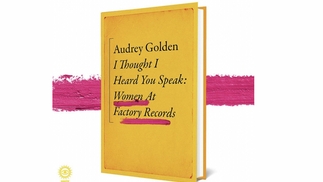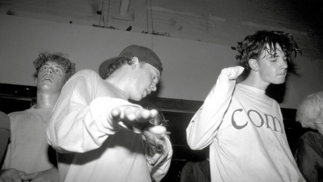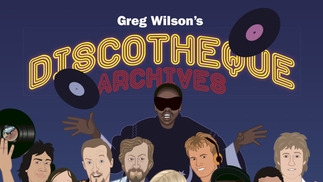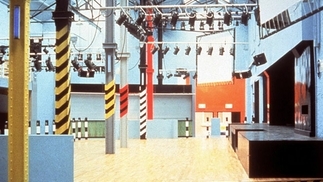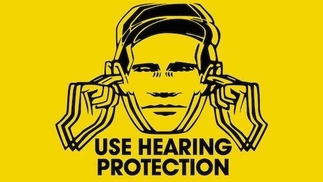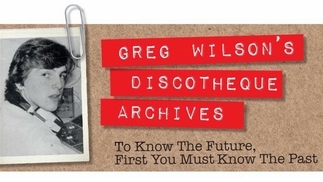GREG WILSON'S DISCOTHEQUE ARCHIVES #23
A guide to dance music's pre-rave past...
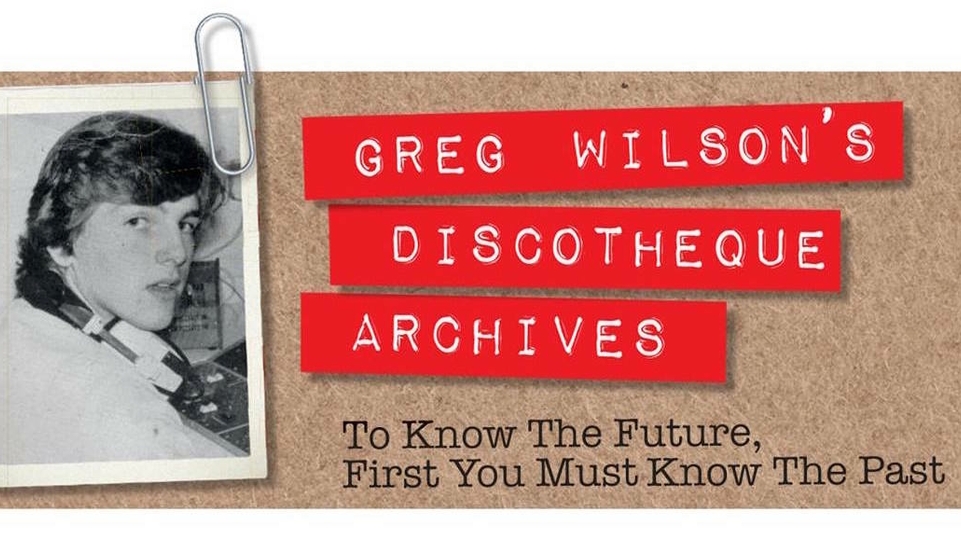
We've drafted in Greg Wilson, the former electro-funk pioneer, nowadays a leading figure in the global disco/re-edits movement and respected commentator on dance music and popular culture, to bring us four random nuggets of history; highlighting a classic DJ, label, venue and record each month.
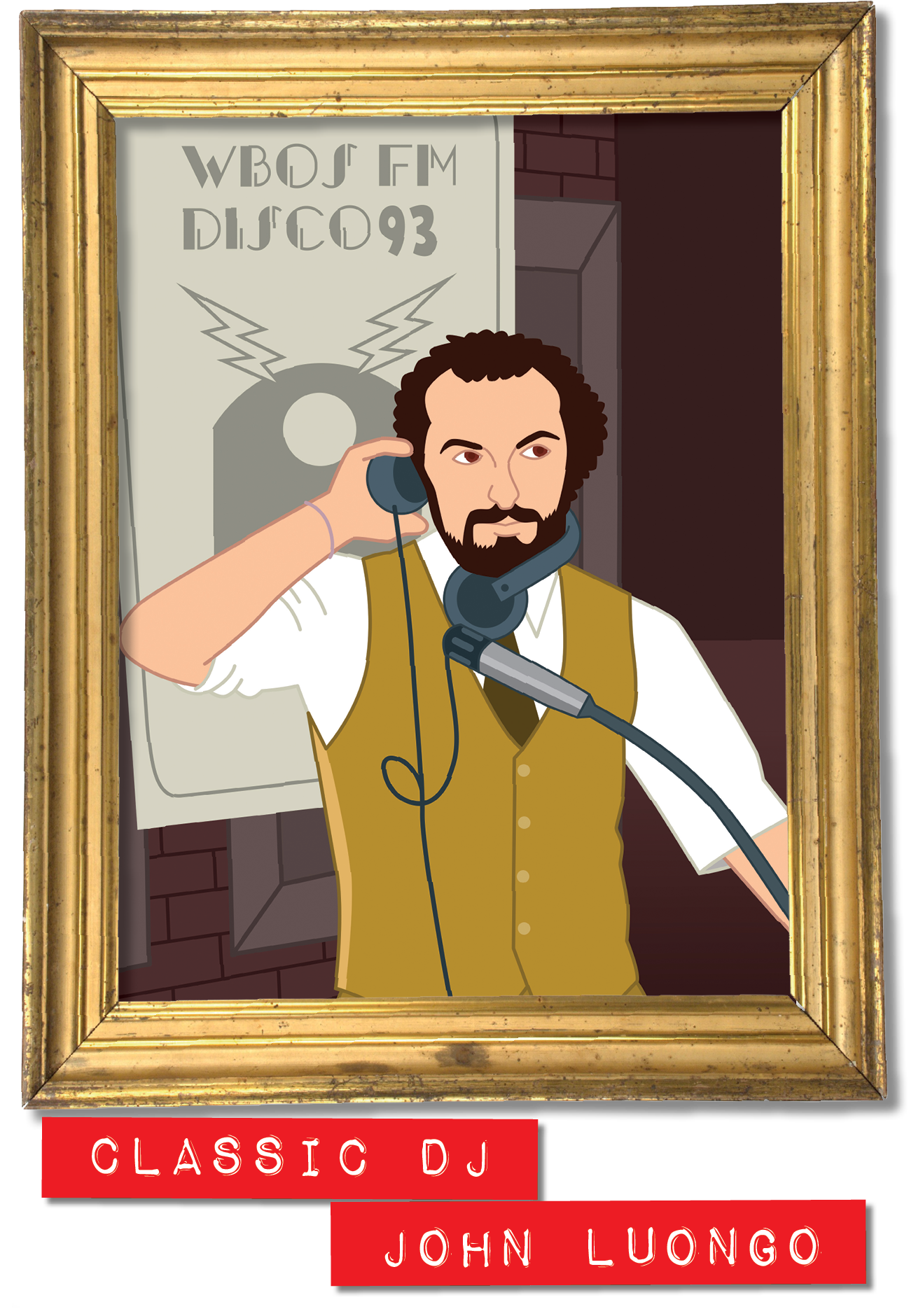
Bostonian, John Luongo is someone who seemed to have slipped through the cracks of dance history. The legacy of his contemporaries, Tom Moulton, ‘inventor’ of the 12” single, and Walter Gibbons, who, in 1976, mixed the first commercially available 12”, is set in stone. There isn’t any similarly definitive first on which to hang John Luongo’s legacy, his contribution thus far undervalued as a consequence.
Starting out in the late-’60s, Luongo’s twin-pronged approach took in both college radio and clubs. At the height of the disco era he reputedly became the first DJ to broadcast live club sets for a major radio station - Boston’s WBOS. His main club residency was at Rhinoceros, whilst he also played at Zelda’s, Whimsey’s and Boston Boston, plus classic NYC venues Studio 54 and Paradise Garage. Along with Gibbons and Bronx DJ Kool Herc, he was a pioneer of turntablism, extending the breaks by switching between 2 copies of the same record.
His big break as a remixer came in 1978 courtesy of Melba Moore’s Bee Gee’s composed ‘You Stepped Into My Life’ - a top 5 US Disco hit. He then breathed new life into The Jackson’s career via classic mixes of ‘Blame It On The Boogie’ and ‘Shake Your Body (Down To The Ground)’.
Generally working alongside engineer Michael Barbiero, the duo would be responsible for some of the most invigorating remixes of the disco era, from artists like Patti Labelle, Johnny Mathis, Marilyn McCoo & Billy Davis Jnr, Sly Stone, Gonzalez and The Real Thing.
He remixed 2 US Disco chart toppers in 1979, Dan Hartman’s ‘Relight My Fire’ and Jackie Moore’s ‘This Time Baby’, before striking a deal with CBS to form his own label, Pavillion. Having initially struggled to make an impact, things took off in 1981, Pavillion scoring a pair of US Disco #1s with ‘You’re Too Late’ by Fantasy and ‘Zulu’ by British band The Quick, which he mixed.
This would prove to be the pinnacle for Pavillion, the label failing to keep up with the seismic changes on the electro horizon. Along with Moulton and Gibbons, Luongo was, seemingly all of a sudden, no longer current as the underground emerged and a whole array of brilliant New York remixers took dance music into uncharted areas of experimentation.
Since those heady disco days Luongo’s pioneering contribution has been somewhat lost to time, only the most ardent of disco connoisseurs aware of his legacy. His rehabilitation as a dance icon is now well underway following the release of the ‘Can You Feel The Force?’ retrospective by Groove Line Records in 2017.

Although dance music provided but a part of its output, Factory made a notable mark on UK/US dance culture - the quintessential British independent launched into Manchester’s late-‘70s post-punk climate by Granada TV presenter Tony Wilson and actor Alan Erasmus, joined by DJ Rob Gretton, manager of the band that gave the label its early kudos, Joy Division, and maverick producer Martin Hannett.
Complete with distinctive Peter Saville artwork, singles and other landmarks were prefixed with their own FAC number (albums FACT). The whole aura around Factory, and its situationist ethos, attracted a fervent student/alternative following.
Joy Division, led by Ian Curtis until his 1980 suicide, would re-emerge, phoenix from the flames, as New Order - guitarist Bernard Sumner providing an unlikely, yet nevertheless effective replacement for the huge loss of Curtis.
Despite its unorthodoxy, Joy Division’s ‘Love Will Tear Us Apart’ enjoyed a 14-week stay on the US Dance chart following Curtis’s death, peaking at #42. New Order followed-up with a trio of entries – ‘Ceremony’ (1981), ‘Everything’s Gone Green’ and ‘Temptation’ (both ’82). This was in the period following the ‘Disco Sucks’ backlash, with disco re-branded as dance and the punk-funk approach flourishing within New York’s underground. Factory was perfectly positioned to benefit from this flux.
Other notable 1981 releases included A Certain Ratio’s cover of Banbarra’s funk classic ‘Shack Up’ and ‘Moody’/’You’re No Good’ by Bronx-based ESG (in conjunction with NYC’s 99 Records).
In 1983 New Order unleashed the biggest selling 12” of all-time, the gargantuan ‘Blue Monday’ - a full-on electronic assault. Its follow-up, ‘Confusion’ was produced by electro innovator Arthur Baker (the session also spawning ‘Thieves Like Us’, a hit in ‘84).
Factory’s output included further US Dance hits from Marcel King, 52nd Street (via A&M/Profile) and Quando Quango, whose ‘Love Tempo’ (1983), mixed by New York’s Danceteria DJ Mark Kamins, reached #4.
Quando Quango’s Mike Pickering, best-known for his fabled DJ partnership with Graeme Park at Manchester’s Factory-owned Haçienda (FAC51), recorded the British house cult-classic, ‘Cariño’ (1987), as part of T-Coy, but Factory missed a massive opportunity to fully embrace dance just as it was about to explode in a blaze of rave - The Haçienda pivotal.
Pickering placed ‘Cariño’ with London’s DeConstruction Records, whilst taking up a position with the label, which would go on to score big via acts like Black Box, K-Klass, The Bassheads and Felix, plus Pickering’s hugely popular band, M People. My re-edit of the track, first released on a 2010 DeConstruction EP, has been given another release via the third volume of my Credit To The Edit series.
New Order, Happy Mondays and Electronic would fly the indie-dance flag for Factory as the ‘80s became the ‘90s, but the label overstretched, running into terminal financial difficulties, resulting in bankruptcy in 1992.
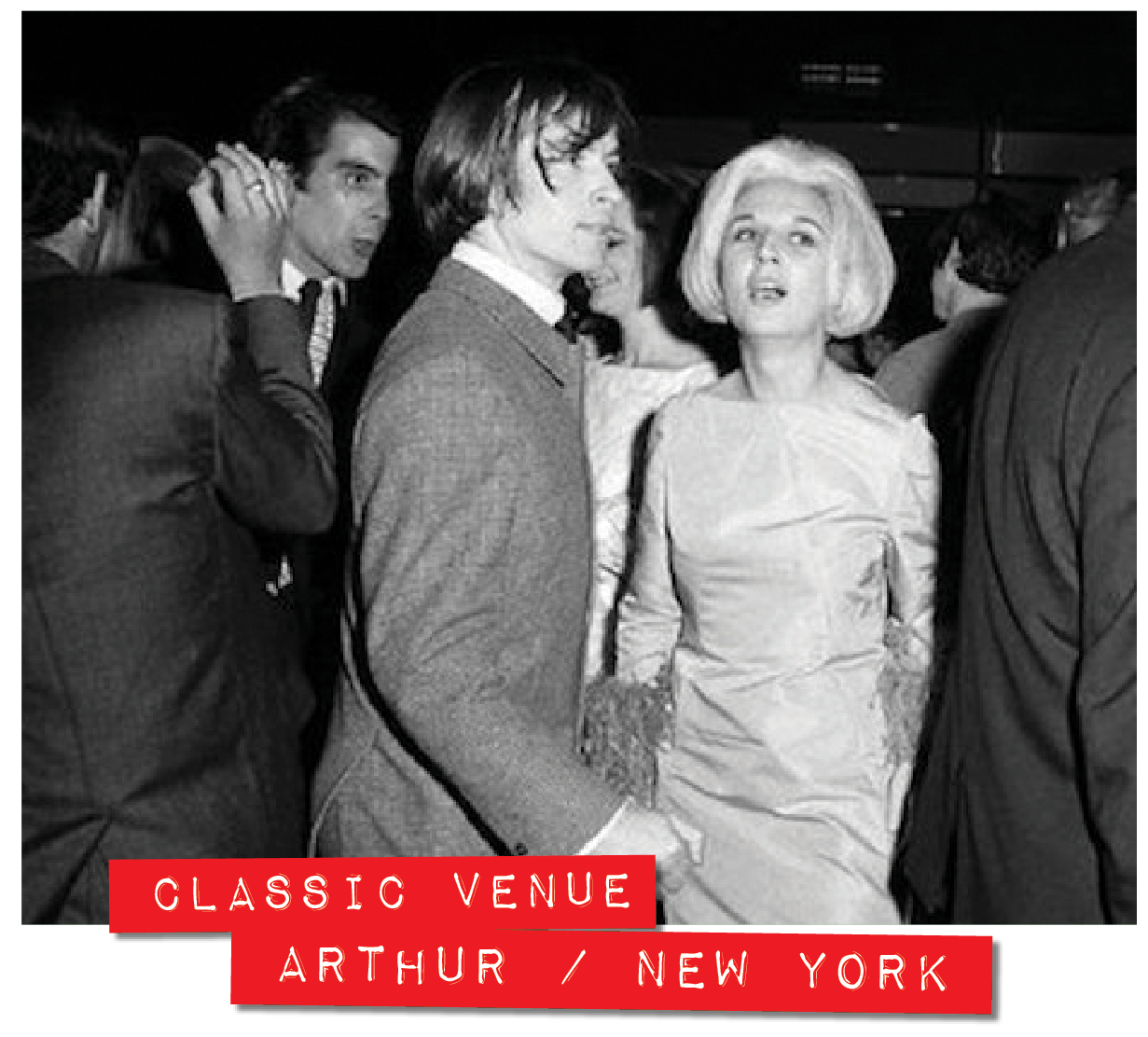
Arthur was a Manhattan celebrity magnet in the mid-late 1960s. With DJ Terry Noel’s pioneering presentation of music set amidst a lavish and extravagant environment, it was the place to see and be seen.
Arthur was established by Sybil Burton (née Williams), an actress from Tylorstown, Wales who had married the famous actor Richard Burton and endured his infamous affair with Elizabeth Taylor. She moved to New York in 1963, taking full advantage of the illustrious connections she had made through her failed marriage.
Arthur opened in 1965 with financial support from the network of Burton’s friends – the name referencing George Harrison’s famous quip from The Beatles 1964 ‘A Hard Day’s Night’ film, where a reporter asked ‘what would you call that hairstyle you’re wearing?’ to which Harrison replied ‘Arthur’.
The venue was on the original site of El Morocco, which emerged as a speakeasy in the prohibition era and had become highly popular with the rich and famous over the next couple of decades before moving location in 1960.
Five years on, Arthur drafted in the relatively unknown Wild Ones as house band, the lead singer of which, Jordan Christopher would later marry owner Burton.
However, it was Terry Noel’s eccentric and innovative DJing that became the club’s leading attraction. Having gained his break by winning a dance competition at New York’s Peppermint Lounge, Noel helped propel Arthur forward when he approached Burton on the opening night, criticising the music and successfully offering his services.
With his musical taste inspired by radio DJ Frankie Crocker, then on WWRL, he was quick to take to the decks. Noel is revered at the genesis of mixing, presenting music in a continuous way by ‘blending’ tracks into each other, using a felt mat for greater manipulation of the records. Soul music was the club’s staple, but jazz and rock also came into play – Noel would build things up then bring it back down a number of times during the night, giving dancers breaks to top up on drinks.
Arthur was a short-lived venture however and gangsters started to move in, resulting in a shooting. Terry Noel briefly moved to California and the venue eventually closed with the end of the decade.
Noel would return to enhance his legacy at Salvation, utilising three turntables to push the boundaries of DJing even further. The baton was passed to Francis Grasso, who replaced Noel at Salvation II and would take mixing to the next level.
Sybil Christopher would found the New Theater on 54th Street and later, Long Island’s Bay Street Theater, where she was artistic director for 22 years.
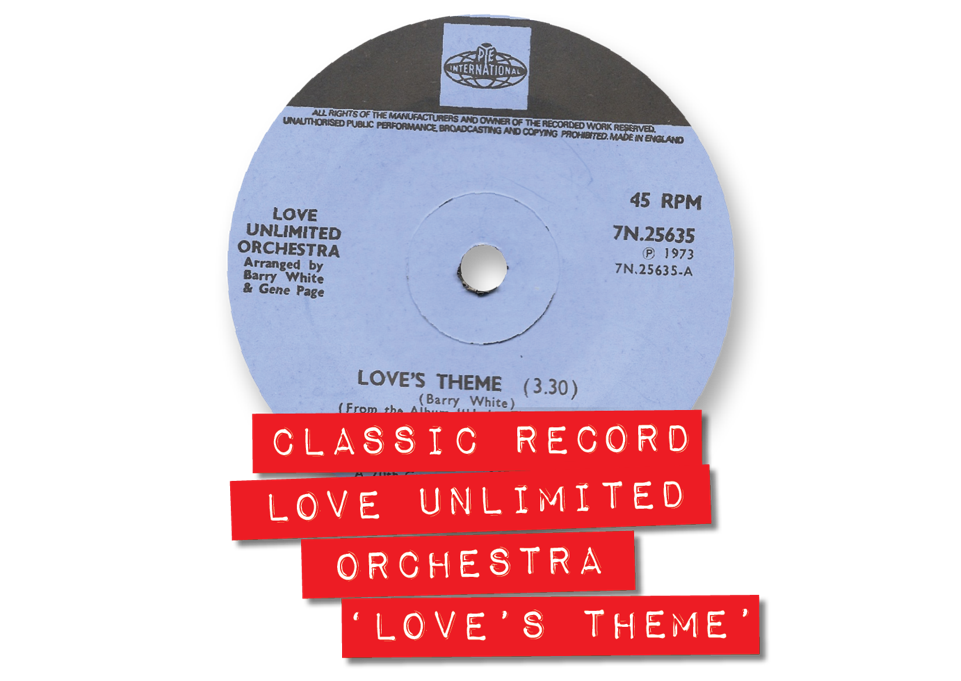
Dubiously, albeit affectionately, known as ‘The Walrus Of Love’, larger-than-life Barry White possessed one of soul’s most distinctive voices, yet he was also behind this luscious instrumental delight that topped the US chart in 1974, helping define disco.
Born Barry Eugene Carter in 1940s Texas, he grew up in South Central Los Angeles. His focus was on music and he learned piano, but he got caught up in the gang activity prevalent in the area; his brother was shot dead and he wound up in jail at 16.
Moving away from gangs and further towards music once he got out of jail, White recorded throughout the ‘60s, both solo and with bands The Upfronts, The Atlantics and The Majestics. It’s often stated that he played on, and even produced, the 1963 Bob & Earl dance sensation ‘Harlem Shuffle’, although White himself denied this.
In the mid-‘60s he was brought in as A&R man at Hollywood’s Del-Fi Records, where he’d work as a songwriter, session musician and arranger, most notably on Felice Taylor’s ‘I Feel Love Comin’ On’ (1967), which reached #11 in the UK.
With the ‘70s, White began producing/writing for female vocal trio Love Unlimited, which included his future wife Glodean James, developing them away from a style that imitated The Supremes. The resultant LP, ‘From A Girl's Point of View We Give to You... Love Unlimited’ (Uni Records 1972) was his first million-seller, featuring the hit single ‘Walkin’ In The Rain With The One I Love’, which included a brief vocal cameo from White during the telephone conversation.
Initially reluctant to move to the fore, White, along with Love Unlimited, would sign to 20th Century Records, his seductive deep-sung solo material achieving global success throughout the coming years, classics including ‘I'm Gonna Love You Just a Little More Baby’ (1973), ‘Can't Get Enough of Your Love, Babe’ (1974), ‘You’re The First, The Last, My Everything’ (1975) and ‘It’s Ecstasy When You Lay Down Next To Me’ (1977).
Riding his newfound fame, in ‘73 White set up the 40-piece Love Unlimited Orchestra, hitting instant jackpot with ‘Love’s Theme’ - the elegant instrumental soon followed by the best-selling ‘Rhapsody in White’ album. Love Unlimited added vocals to ‘Love’s Theme’ in 1974, but the original instrumental remains the definitive version – the first of four disco flavoured #1s between Feb-July ’74 that would cause the industry to sit up and take notice – the others by MFSB, The Hues Corperation and George McCrae.
White continued to record into the 1990s, with his final single ‘Staying Power’ (1999) receiving two Grammy Awards. He died in 2003.
Written by Greg Wilson
Edited by Josh Ray
'Mr. Luongo' illustration by Pete Fowler
Check out the previous Discotheque Archives here
